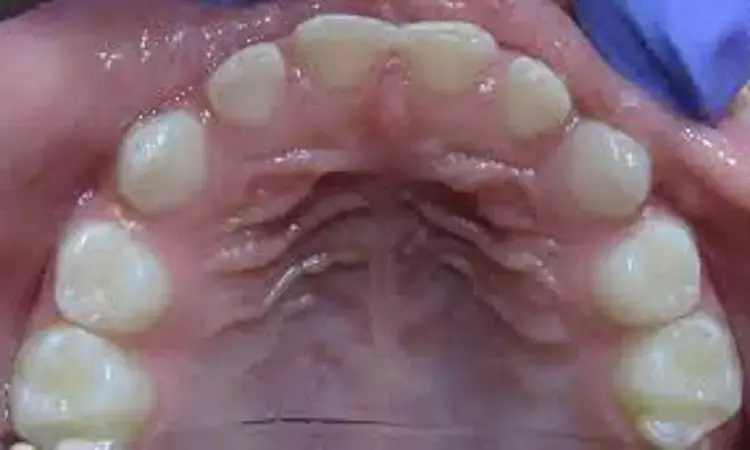- Home
- Medical news & Guidelines
- Anesthesiology
- Cardiology and CTVS
- Critical Care
- Dentistry
- Dermatology
- Diabetes and Endocrinology
- ENT
- Gastroenterology
- Medicine
- Nephrology
- Neurology
- Obstretics-Gynaecology
- Oncology
- Ophthalmology
- Orthopaedics
- Pediatrics-Neonatology
- Psychiatry
- Pulmonology
- Radiology
- Surgery
- Urology
- Laboratory Medicine
- Diet
- Nursing
- Paramedical
- Physiotherapy
- Health news
- Fact Check
- Bone Health Fact Check
- Brain Health Fact Check
- Cancer Related Fact Check
- Child Care Fact Check
- Dental and oral health fact check
- Diabetes and metabolic health fact check
- Diet and Nutrition Fact Check
- Eye and ENT Care Fact Check
- Fitness fact check
- Gut health fact check
- Heart health fact check
- Kidney health fact check
- Medical education fact check
- Men's health fact check
- Respiratory fact check
- Skin and hair care fact check
- Vaccine and Immunization fact check
- Women's health fact check
- AYUSH
- State News
- Andaman and Nicobar Islands
- Andhra Pradesh
- Arunachal Pradesh
- Assam
- Bihar
- Chandigarh
- Chattisgarh
- Dadra and Nagar Haveli
- Daman and Diu
- Delhi
- Goa
- Gujarat
- Haryana
- Himachal Pradesh
- Jammu & Kashmir
- Jharkhand
- Karnataka
- Kerala
- Ladakh
- Lakshadweep
- Madhya Pradesh
- Maharashtra
- Manipur
- Meghalaya
- Mizoram
- Nagaland
- Odisha
- Puducherry
- Punjab
- Rajasthan
- Sikkim
- Tamil Nadu
- Telangana
- Tripura
- Uttar Pradesh
- Uttrakhand
- West Bengal
- Medical Education
- Industry
Orthodontic treatment can influence the palatal rugae in dental extraction patients: Study

Orthodontic treatment can influence the palatal rugae, especially in cases of extraction suggests a study published in the Journal of Dentistry.
Researchers conducted a study to determine the uniqueness and stability of the palatal rugae after orthodontic treatment.
Cast models of untreated subjects (n = 50) were obtained twice at intervals of 8–30 months. Cast models of patients who received non-extraction (n = 50) and extraction (n = 50) orthodontic treatment were obtained before and after treatment at intervals of 11–41 months and 14–49 months, respectively. All 300 cast models were scanned digitally. The palatal rugae were manually extracted and transformed into 3D point clouds using reverse engineering software. An iterative closest point (ICP) registration algorithm based on correntropy was applied, and the minimum point-to-point root mean square (RMS) distances were calculated to analyze the deviation of palatal rugae for scans of the same subject (intrasubject deviation [ISD]) and between different subjects (between-subject deviation [BSD]). Differences in ISD between each group and the deviation between ISD and BSD of all 150 subjects were evaluated.
Results of the study are:
Significant differences were found in the 150 ISD and 1225 BSD in each group, as well as the 150 ISD and 11,175 BSD across all groups. The mean values of ISD in untreated, non-extraction and extraction group were 0.178, 0.229 and 0.333 mm, respectively. When the first ruga was excluded in the extraction group, the mean ISD decreased to 0.241 mm, which was not significantly different from that in the non-extraction group (p = 0.314).
Thus, Orthodontic treatment can influence the palatal rugae, especially in cases of extraction. Furthermore, variation mainly existed in the first ruga in cases of extraction. However, palatal rugae are still unique and may be used as a supplementary tool for individual identification.
Reference:
Evaluation of the stability of the palatal rugae using the three-dimensional superimposition technique following orthodontic treatment by Jiamin Zhao et. al published in the Journal of Dentistry.
Dr. Shravani Dali has completed her BDS from Pravara institute of medical sciences, loni. Following which she extensively worked in the healthcare sector for 2+ years. She has been actively involved in writing blogs in field of health and wellness. Currently she is pursuing her Masters of public health-health administration from Tata institute of social sciences. She can be contacted at editorial@medicaldialogues.in.
Dr Kamal Kant Kohli-MBBS, DTCD- a chest specialist with more than 30 years of practice and a flair for writing clinical articles, Dr Kamal Kant Kohli joined Medical Dialogues as a Chief Editor of Medical News. Besides writing articles, as an editor, he proofreads and verifies all the medical content published on Medical Dialogues including those coming from journals, studies,medical conferences,guidelines etc. Email: drkohli@medicaldialogues.in. Contact no. 011-43720751


